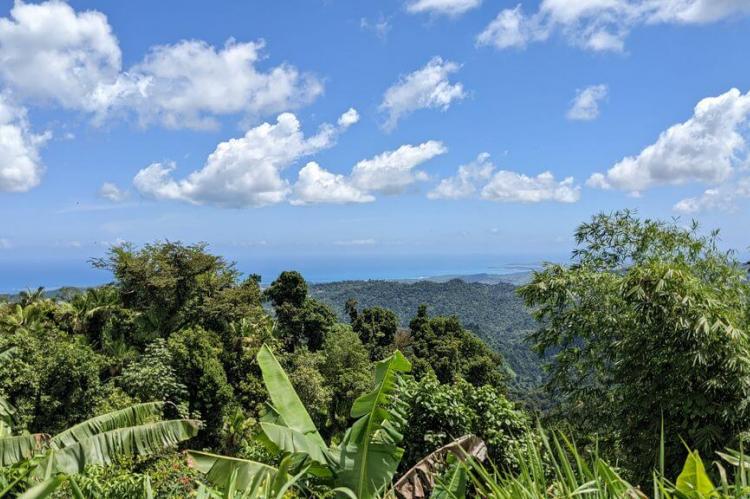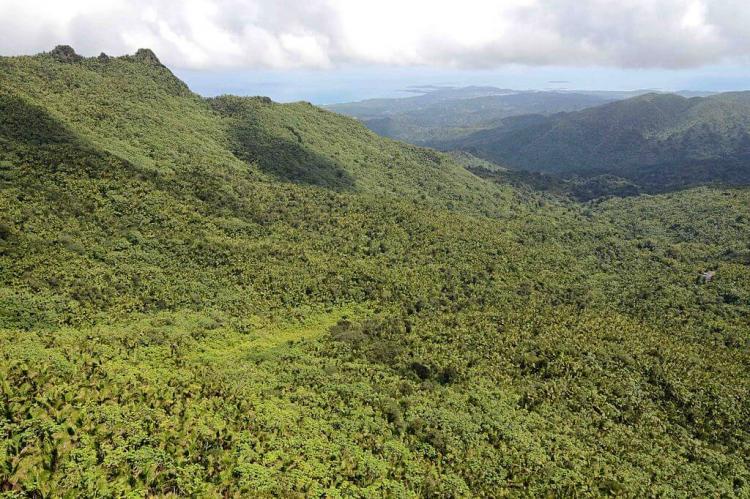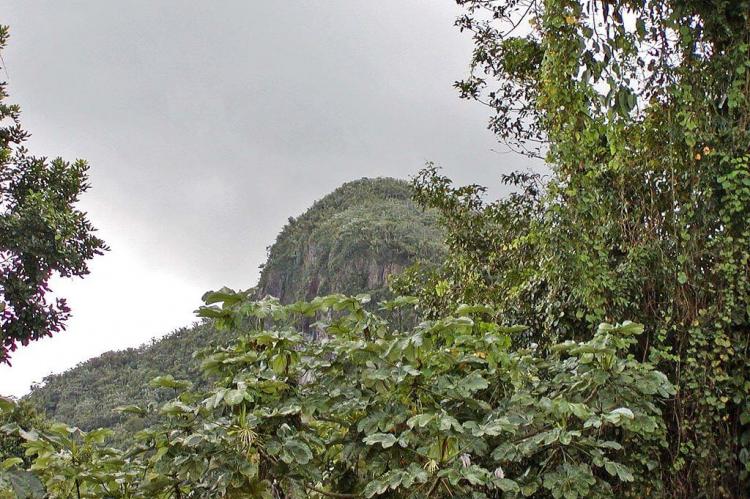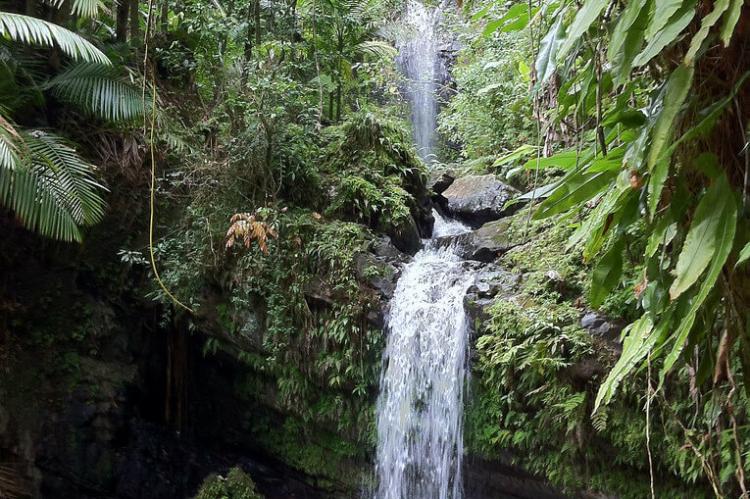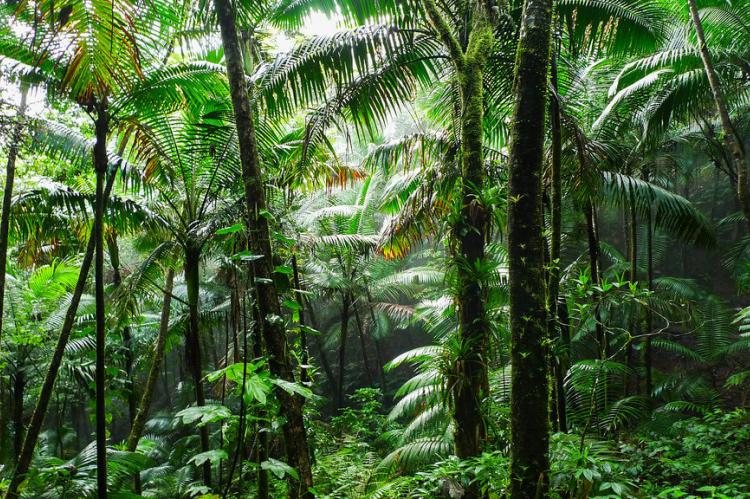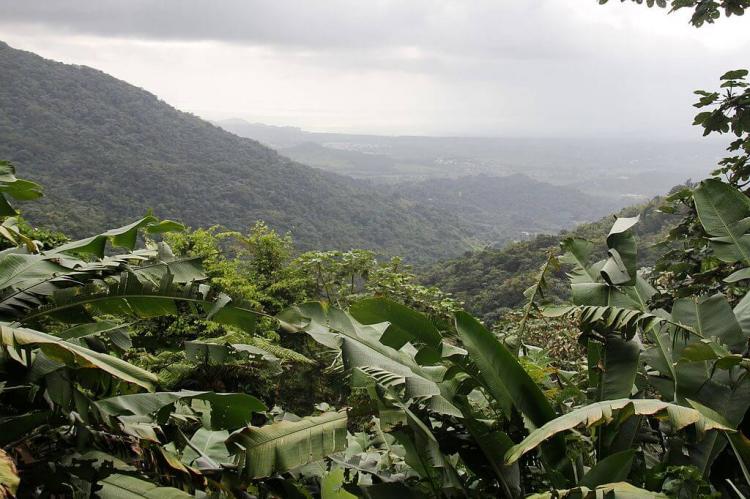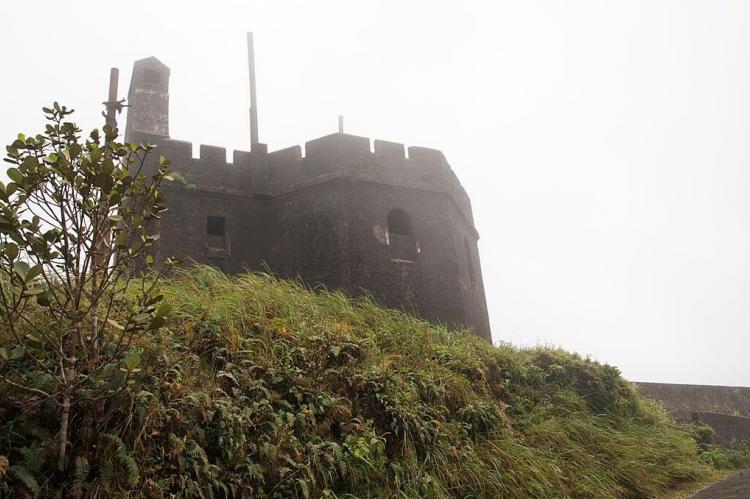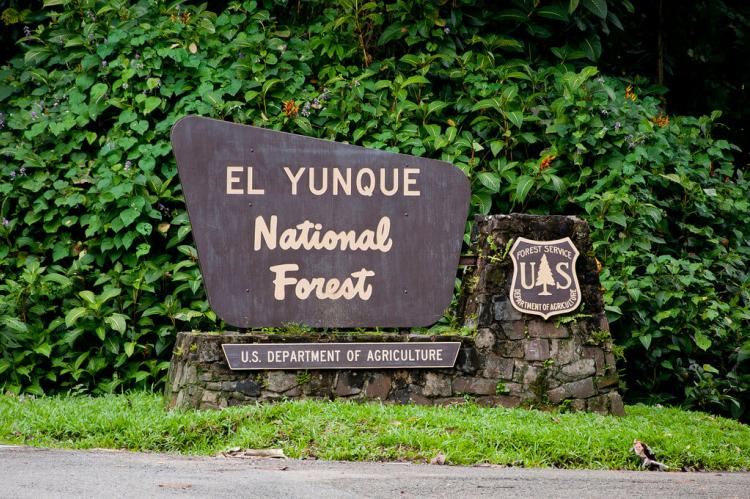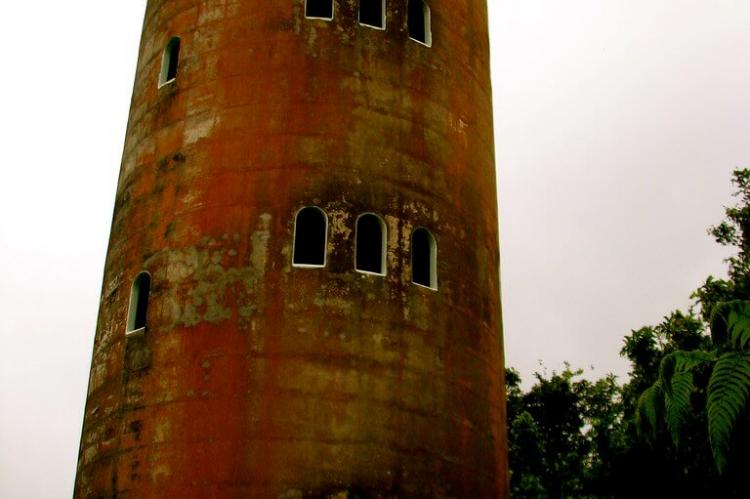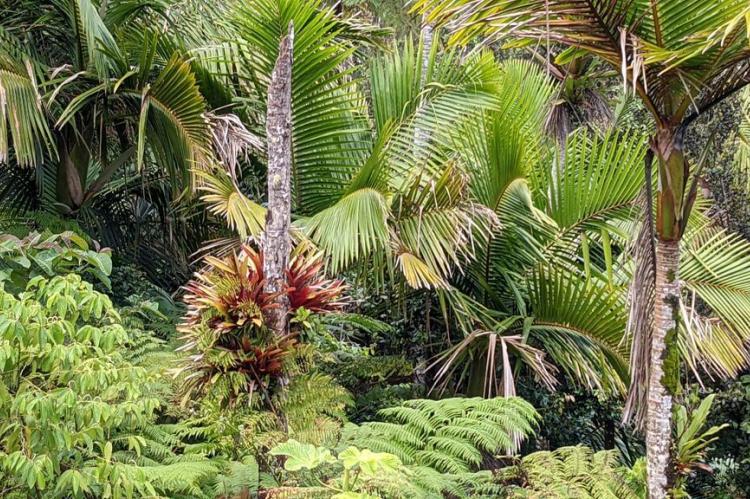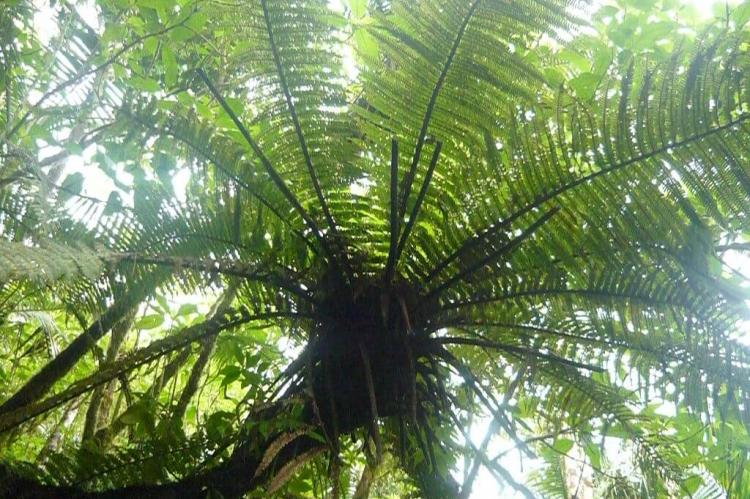El Yunque National Forest (Puerto Rico)
El Yunque National Forest is a forest reserve in northeastern Puerto Rico on the slopes of the Sierra de Luquillo mountains. It is the only tropical rainforest in the U.S. National Forest System. High annual rainfall creates a jungle-like setting with lush foliage, crags, waterfalls, and rivers.
El Yunque National Forest
El Yunque National Forest (Bosque Nacional El Yunque) is a tropical rainforest in northeastern Puerto Rico, nestled within the Sierra de Luquillo mountains. It boasts the unique distinction of being the only tropical rainforest in the United States National Forest System.
Formerly known as the Caribbean National Forest, El Yunque is a haven for diverse flora and fauna, many of which are endemic to the island. The island of Puerto Rico was formed by volcanic activity during the Triassic period. Thrusting out of the Caribbean Sea, it had no land bridge to any continent. Consequently, the wildlife of Puerto Rico (and El Yunque National Forest) originally arrived by swimming, floating, or flying.
Landscapes and Ecosystems
The forest's diverse topography, shaped by volcanic activity and erosion, encompasses 28,000 acres, making it the largest block of public land in Puerto Rico: the highest peak, El Yunque, soars to an impressive 3,494 feet above sea level. Lush foliage, cascading waterfalls, and craggy mountains paint a picture-perfect jungle landscape.
El Yunque can be broadly categorized into four distinct forest vegetation areas:
-
Tabonuco Forest: Dominated by the towering tabonuco tree (Dacryodes excelsa), this zone thrives in the lower to mid-elevations.
-
Palo Colorado Forest: Characterized by the Palo Colorado tree (Cyrilla racemiflora), this area occupies the mid-elevations.
-
Sierra Palm Forest: Defined by Sierra palm trees (Prestoea montana), this zone thrives at higher elevations.
-
Dwarf Forest: This unique ecosystem, located around 3,000 feet, is home to stunted vegetation adapted to harsh conditions.
Biodiversity
El Yunque's biodiversity is genuinely remarkable. Over 240 native tree species, 50 native orchids, and 150 fern species call this forest home. Additionally, 127 terrestrial vertebrates and ten aquatic invertebrates contribute to the vibrant tapestry of life.
The forest also serves as a crucial habitat for several endangered and threatened species, including:
-
Puerto Rican Parrot (Amazona vittata): Once on the brink of extinction, this iconic green parrot with a red forehead slowly returns thanks to conservation efforts.
-
Puerto Rican Boa (Epicrates inornatus): This non-venomous snake, found in lower elevations, is being studied to understand its ecological role better.
-
Puerto Rican Broad-winged Hawk (Buteo platypterus brunnescens): This majestic raptor, facing habitat loss, prefers hunting from lofty perches.
-
Puerto Rican Sharp-shinned Hawk (Accipiter striatus venator): This small forest hawk, restricted to isolated areas, preys on small birds.
-
Coquí (Eleutherodactylus spp.): These tiny frogs, known for their distinctive calls, are a beloved symbol of Puerto Rico.
Threats and Conservation Efforts
Despite its ecological significance, El Yunque faces various threats, including deforestation, habitat fragmentation, and illegal hunting. However, dedicated conservation efforts are underway to protect this irreplaceable treasure.
The U.S. Forest Service, the U.S. Fish and Wildlife Service, and the Puerto Rican Department of Natural Resources collaborate to monitor and manage the forest's resources. Programs like the Puerto Rican Parrot Recovery Plan aim to restore endangered species populations.
Exploration
El Yunque offers a wealth of opportunities for outdoor enthusiasts and nature lovers. Hiking trails wind through the forest, leading to breathtaking viewpoints and hidden waterfalls. Visitors can also discover ancient Taíno petroglyphs, remnants of the island's indigenous people.
El Yunque National Forest is a testament to nature's power and conservation's importance. Its unique beauty and biodiversity make it a precious gem in the Caribbean crown, waiting to be explored and protected for generations.

